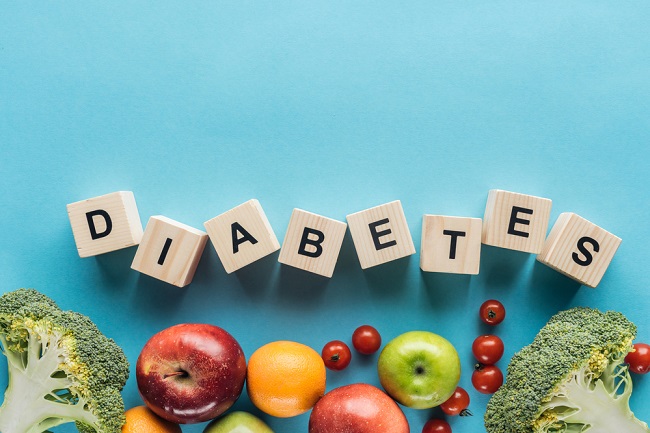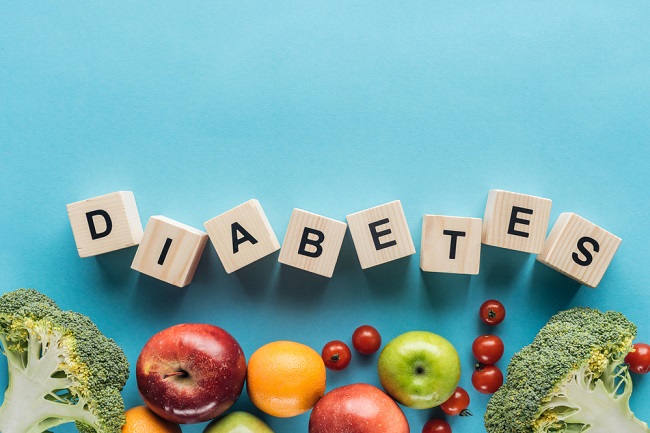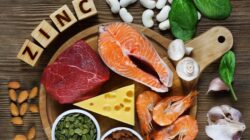Regulating food for diabetics aims to control blood sugar and prevent happening complications. The trick is set schedule Eat the right amount and type of food.
A person is said to have diabetes if his blood sugar level >126 mg/dL in the fasting state, or >200 mg/dL if not fasting. It is a chronic (long-lasting) disease and can cause complications such as visual disturbances, kidney failure, heart disease, and neurological disorders. In 2017, Indonesia was ranked 6th for the country with the highest number of people with diabetes in the world, and the number continues to increase.

Diabetes or diabetes generally occurs due to lack of physical activity and the wrong diet. Therefore, in dealing with diabetes, it is very important to adopt a healthy lifestyle, in addition to taking medication regularly.
One of the healthy lifestyles that need to be done is to exercise regularly, 3-5 times a week, each for 30-45 minutes, for a total of at least 150 minutes per week. Examples of recommended sports are leisurely walking, brisk walking, jogging, cycling, and swimming.
In addition to exercise, diabetics are also advised to stop smoking and regulate their diet. In managing the food menu, diabetics must pay attention to the amount of intake and regularity of the eating schedule, as well as the types of food that are good for consumption.
Amount intake and Meal Schedule for Diabetics
The amount of intake in question is the number of calories consumed. The recommended number of calories is 25-30 calories per kilogram of ideal body weight, every day. For example, a person with an ideal weight of 50 kg requires 1,250-1,500 calories a day.
But, remember well, ideal body weight not current weight. For diabetics who are also obese, it is highly recommended to lose weight to prevent complications. The recommended number of calories for obese people is calculated from the analysis of the previous intake, minus 500 calories per day.
In addition to the amount, the eating schedule that has been determined by the nutritionist must also be adhered to, to maintain blood sugar levels in a stable and non-fluctuating state. Diabetics are encouraged to eat three large meals a day, and small or small meals 2-3 times a day. The distance between large meals and interludes ranges from 2.5 to 3 hours.
Types of Food for Diabetics
Diabetics need to determine what types of food are good to eat, and which foods should be avoided. This diet is important to live everyday, or when you want to travel.
For carbohydrates, the recommended portion is 45-65% of total calories, or a minimum of 130 grams per day. Choose sources of complex carbohydrates that are high in fiber, such as potatoes, vegetables, fruit, whole grains, corn, and beans. Avoid simple carbohydrates or foods that can increase blood sugar easily, such as fruit juices, sugar, and candy, as well as refined flour products, such as pastries or cakes. Sugar can still be consumed, a maximum of 5% of total calories (approximately 4 teaspoons) per day. Low-calorie artificial sweeteners, such as stevia or lo han kuo, safe to use, as long as it does not exceed the safe limit.
The recommended amount of fiber intake is 14 grams per 1000 calories, or a minimum of 5 servings of vegetables and fruit (1 serving is equivalent to 1 small bowl). As for protein, it is recommended 10-20% of total calories. Choose good protein sources, such as fish, eggs, skinless chicken, lean beef, tofu, tempeh, nuts, and low-fat dairy products.
The recommended portion of fat intake is 20-25% of total calories. Choose foods that contain good fats, such as fish or plant fats, and avoid saturated fats which are abundant in fried foods and animal fats.
High cholesterol and hypertension also contribute to accelerating the emergence of complications in diabetics, so cholesterol and salt intake also needs to be reduced. To reduce cholesterol intake, you can reduce the consumption of fried foods, red meat, and offal. For salt, only a maximum of 1 teaspoon of table salt is allowed in one day, or the equivalent of 2,300 mg of sodium per day. Avoid foods that contain hidden sodium, such as vegetables, and foods that are preserved or added preservatives.
Diabetes is a disease that has the potential to cause many complications and can greatly reduce the quality of life of the sufferer. Of course this can be prevented by keeping blood sugar levels within normal limits. The trick is not only by regularly taking medicines for diabetes, but also by adopting a healthy lifestyle, including a healthy diet.
Written by:
dr. Monique C. Widjaja, MGizi, SpGK











